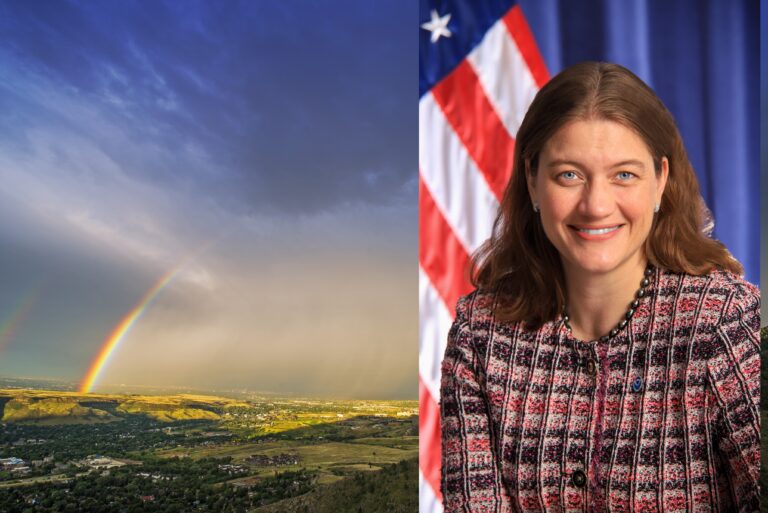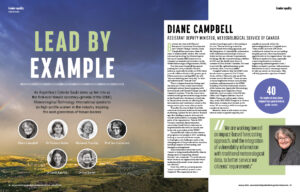Sarah Kapnick’s first job related to meteorological applications was structuring catastrophe bonds at a bank. This required using catastrophe models to quantify expected losses from windstorms in Europe and hurricanes in the US, and using that data to develop bonds with payouts when extreme weather occurred. It was this job that inadvertently led to her successful career in the met sector and to her current position as chief scientist at NOAA.
“I was fresh out of college when I started in the catastrophe bonds role in the mid-2000s,” she explains. “I was curious about the science of the bonds and how it needed to evolve with climate change. I was completely obsessed with the problem. My boss at the time, however, told me my job was not science and didn’t see climate change as an issue!
“When I argued with him, he said if I believed that much in the problem I should make it my career. I took his advice, believing in my intuition and curiosity, and that led to me getting a masters in atmospheric sciences and a PhD in atmospheric and oceanic sciences.”
Kapnick’s role today sees her focusing on policies and program direction for science and technology at NOAA and ensuring that the work at NOAA informs the future of innovation and commerce beyond the agency. “Currently I am working on encouraging innovation in climate modeling and the use of climate information to inform decision makers – from communities and small businesses to states, the federal government and multinational corporations,” explains Kapnick. “We call this work building a climate-ready nation to manage our exposure to the current climate, and also to mitigate and adapt to climate change.”
Speaking about the most important science and technology goals for NOAA over the next few years, she continues, “We want to improve our models for forecasts and predictions. This requires bringing in new data sets from us or third parties via data assimilation and targeted field campaigns to understand key processes in the Earth system. We are also building out our ocean observations for seasonal to decadal prediction to improve prediction skill and applications and develop social, behavioral and economic sciences to communicate the value and impact of our science and technology.”
Alongside these projects, Kapnick is also playing a big role in encouraging gender equality within NOAA. “We have built plans for improving diversity in our workforce, including measuring where we are and where we hope to be in the future,” she says. “I have also brought up the issue and had solutions brainstormed in different parts of NOAA. It’s something that requires multiple solutions and strategies. It can’t be solved in isolated areas but requires systematic cultural change.”
To encourage more women to start a career in the met sector, Kapnick believes that mentorship can play a key role. “As I’ve risen through the ranks, I’ve focused increasingly on mentorship and sponsorship of those coming up behind me to make sure they get opportunities, develop critical skills, and hopefully not feel the loneliness I did as an early and mid-career scientist.”
A longer version of this article originally appeared in the January 2023 issue of Meteorological Technology International. To view the magazine in full, click here.




